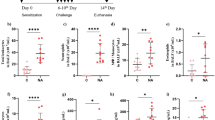Abstract
In bronchial asthma, eosinophils are upregulated and their survival is suggested to be prolonged by the action of some cytokines such as Interleukin (IL)-3, IL-5 and granulocyte-macrophage colony-stimulating factor (GM-CSF). We find here that the survival of eosinophils in the peripheral blood of patients with asthma is correlated with the serum levels of IL-3 but not of IL-5 and GM-CSF. Interestingly, theophylline is revealed to induce apoptosis of the prolonged survival eosinophils by IL-3, as judged by morphological changes and nucleosomal DNA fragmentation. During the apoptosis, caspase-3 in eosinophils stimulated by IL-3 is activated by theophylline. The substrate of caspase-3, poly (ADP-ribose) polymerase (PARP), is cleaved in the eosinophils after theophylline treatment. These results suggest that theophylline is able to induce apoptosis of the IL-3 activated eosinophils in patients with bronchial asthma, and that its clinical effectiveness may be due to the reduction of inflammatory cells in the airway.
Similar content being viewed by others
References
Barnes PJ. New aspects of asthma. J Intern Med 1992; 231: 451-461.
Busse WW, Nagata M, Sedgwick JB. Characteristics of airway eosinophils. Eur Respir J 1996; 9(Suppl 2): 132S-135S.
Resnick MB, Weller PF. Mechanisms of eosinophil recruitment. Am J Respir Cell Mol Biol 1993; 8: 349-355.
Morland CM, Wilson SJ, Holgate ST, Roche WR. Selective eosinophil leukocyte recruitment by transendothelial migration and not by leukocyte-endothelial cell adhesion. Am J Respir Cell Mol Biol 1992; 6: 557-566.
Rothenberg ME, Owen WF, Silberstein DS, et al. Human eosinophils have prolonged survival, enhanced functional properties and become hypodense when exposed to human interleukin 3. J Clin Invest 1988; 81: 1986-1992.
Rothenberg ME, Petersen J, Stevens RL, et al. IL-5-dependent conversion of normodense human eosinophils to the hypodense phenotype used 3T3 fibroblasts for enhanced viability, accelerated hypodensity and sustained antibody-dependent cytotoxity. J Immunol 1989; 143: 2311-2316.
Owen WF, Rothenberg ME, Silberstein DS, et al. Regulation of human eosinophil viability, density and function by granulocyte/macrophage colony stimulating factor in the presence of 3T3 fibroblasts. J Exp Med 1987; 166: 129-141.
Pauwels RA, Lofdahl CG, Postma DS, et al. Effect of inhaled formoterol and budesonide on exacerbations of asthma. N Engl J Med 1997; 337: 1405.
Markham A, Faulds D. Theophylline. A review of its potential steroid sparing effects in asthma. Drugs 1998; 56: 1081-1091.
Ohta K, Sawamoto S, Nakajima M, et al. The prolonged survival of human eosinophils with interleukin-5 and its inhibition by theophylline via apoptosis. Clin Exp Allergy 1996; 26(Suppl 2): 10-15.
Kerr JFR, Wyllie AH, Currie AR. Apoptosis. A basic biological phenomenon with wide-ranging implication in tissue kinetics. Br J Cancer 1972; 26: 239-257.
Lazebnik YA, Kaufman SH, Desnoyers S, et al. Cleavage of poly (ADP-ribose) polymerase by a proteinase with properties like ICE. Nature 1994, 371: 346-347.
Nicholson DW, Ali A, Thornberry NA, et al. Identification and inhibition of the ICE/CED-3 protease necessary for mammalian apoptosis. Nature 1995; 376: 37-46.
Tanuma S, Shiokawa D. Multiple forms of nuclear deoxyribonuclease in rat thymocytes. Biochem Biophys Res Commun 1994; 203(2): 789-797.
Shiokawa D, Iwamatsu A, Tanuma S. Purification, characterization, and amino acid sequencing of DNase γ from rat spleen. Arch Biochem Biophys 1997; 346: 15-20.
Inohara N, Koseki T, Chen S, Benedict MA, Nunez G. Identication of regulatory and catalytic domains in the apoptosis nuclease DFF40/CAD. J Biol Chem 1999; 274: 270-274.
Zapata JM, Takahashi R, Salvesen GS, et al. Granzyme release and caspase activation in activated human T-lymphocytes. J Biol Chem 1998; 273: 6916-6920.
Gleich GJ. The eosinophil and bronchial asthma. Current understanding. J Allergy Clin Immunol 1990; 85: 422-436.
Park CS, Choi YS, Ki SY, et al. Granulocyte macrophage colony-stimulating factor is the main cytokine enhancing survival of eosinophils in asthmatic airways. Eur Respir J 1998; 12: 872-878.
Walsh GM. Mechanisms of human eosinophil survival and apoptosis. Clin Exp Allergy 1997; 27: 482-487.
Werner L, Alexander O, Eva D, et al. Differential regulation of CD 95 (Fas/APO-1) expression in human blood eosinophils. Eur J Inmmunol 1998; 28: 2057-2065.
Anne D, Zhenzi C, Solomon H, Salem C, Marina P. Fasmediated apoptosis in cultured human eosinophils. Blood 1996; 87: 2822-2830.
Matsumoto K, Robert PS, Saito H, Iikura Y, Bruce SB. Induction of apoptosis in human eosinophils by anti-Fas antibody treatment in vitro. Blood 1995; 86: 1437-1443.
Lam A, Newhouse MT. Management of asthma and chronic airflow limitation. Are methylxanthines obsolete? Chest 1990; 98: 44-52.
Tinkelman DG, Reed CE, Nelson HS, Offord KP. Aerosol beclomethasone dipropionate compared with theophylline as primary treatment of chronic, mild to moderatelly severe asthma in children. Pediatrics 1993; 92: 64-77.
Yasui K, Bin H, Nakazawa T, Agematsu K, Kamiyama A. Theophylline accelerates human granulocyte apoptosis not via phosphodiesterase inhibitor. J Clin Invest 1997; 100: 1677-1684.
Kidney J, Dominguez M, Taylor PM, Rose M, Chung KF, Barnes PJ. Inmmunomodulation by theophylline in asthma; demonstration by withdrawal of therapy. Am J Respir Crit Care Med 1995; 151: 1907-1914.
Djukanovic R, Finnerty JP, Lee C, Wilson S, Madden J, Holgate ST. The effects of theophylline on mucosal inflammation in asthmatic airways biopsy results. Eur Respir J 1995; 8: 831-833.
Sullivan P, Bekir S, Jaffar Z, Page C, Jeffery P, Costello J. Anti-inflammatory effects of low-dose oral theophylline in atopic asthma. Lancet 1994; 343: 1006-1008.
Adachi T, Rafeul A. The mechanism of IL-5 signal transduction. Am J Physiol 1998; 275: C623-C633.
Hirata H, Takahashi A, Kobayashi S, et al. Caspases are activated in a braunched protease cascade and control distinct downstream processes in Fas-induced apoptosis. J Exp Med 1998; 187: 587-600.
Ohta T, Kinoshita T, Naito M, et al. Requirement of the caspase-3/CPP32 protease cascade for apoptotic death following cytokine deprivation in hematopoietic cells. J Biol Chem 1997; 272: 23111-23116.
Author information
Authors and Affiliations
Rights and permissions
About this article
Cite this article
Takeuchi, M., Hayakawa, A., Takagi, K. et al. Theophylline induces apoptosis of the IL-3 activated eosinophils of patients with bronchial asthma. Apoptosis 4, 461–468 (1999). https://doi.org/10.1023/A:1009656527168
Issue Date:
DOI: https://doi.org/10.1023/A:1009656527168




